Are you wondering what types of blocks you need for your block center?
What about how to organize the blocks? Or how much space you need? Well, we’ve got the answers to those questions and more.
This post is the third in a series all about block play. In the first article, we explained the benefits of block play. In the second, we discussed the stages of block play. We hope you enjoyed those articles!
Initially, setting up a block play area at home can be an investment in time and resources. However, the benefits of block play will outweigh any investment. Building blocks for kids grow with your child as they develop, making them a household treasure.
By establishing a block center for block play, you create a space for creative and imaginative play. You can start simple with one or two sets and build over time.
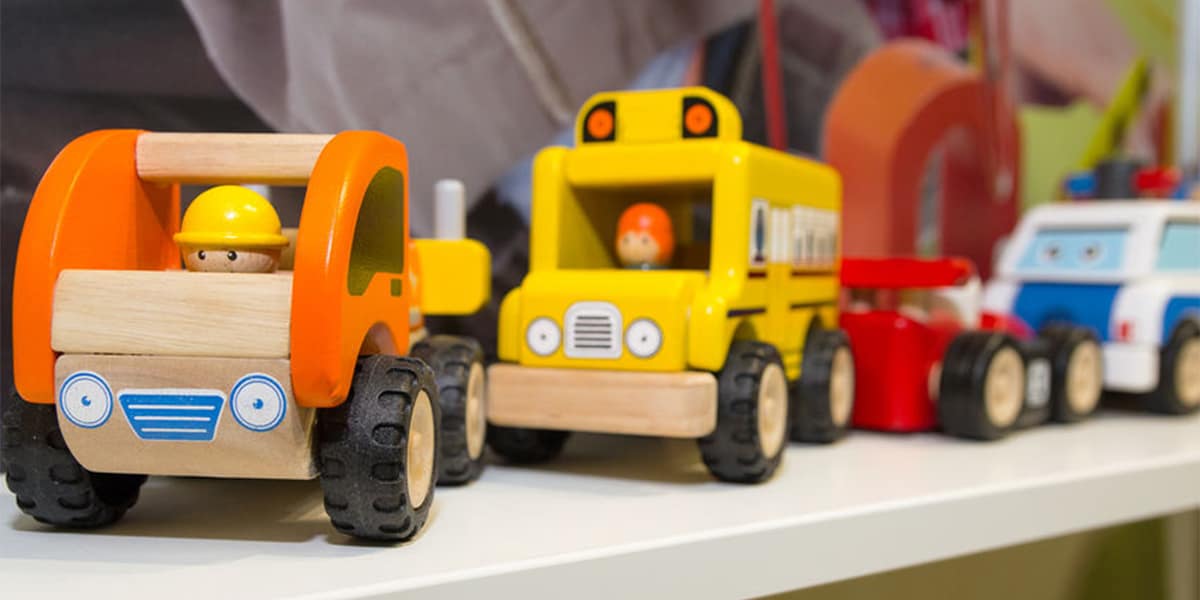
Grab Your FREE 30-Day Trial of Amazon Prime TODAY!
Try Amazon Prime for FREE! 🌟
If you’re not a Prime member, you can sign up for a FREE Amazon Prime trial, including free two-day shipping, access to Prime Video, and more.
To Emphasize the Importance of Block Play
Create a separate block play area
You will first want to create a dedicated space. Having a permanent place outfitted with the appropriate props and accessories will help to stimulate your child’s block play. Usually, a corner away from the traffic flow that can temporarily expand into a more substantial area is ideal. You will want enough initial space for 1-3 children to build comfortably together, minimizing accidental tumbles. If there are more, this is where the temporary expansion area is helpful.
A hard surface to support sturdy building is essential. However, a busy block-building session can be noisy. If you have hard surface floors like wood or tile, you may want to consider a tightly woven flat carpet to provide a comfortable place and reduce noise. Choosing one with roadways and places around town printed on it is a plus.
Otherwise, if you have carpeted floors, you may want to use a board or other firm material to create a sturdy building surface. Consider adding a mirror to the wall to give it a sense of openness and add another dimension to their play.
Blocks are a natural fit if you have a play kitchen or house area. Locating them in proximity to each other allows them to spill over for some role-play activities. Blocks become household items like telephones, beds, or cars, while household items add lifelike details to the structures in the block play area.
How you present the blocks matters
Blocks must be kept so they are organized and easily accessible. Children are more inclined to engage in block play if the blocks are immediately visible in open containers. It may be a deterrent if they are in closed bins and high up on shelves. Remember, out of sight, out of mind! Close to the ground, low shelves are perfect. For larger, heavier blocks, you can store them on the floor in clearly labeled bins.
Think about how you want to arrange the blocks. Using the same open containers (i.e., baskets, tubs, or crates) reduces visual clutter and is more appealing for kids (moms, too!).
Now label, label, and label some more! Tags are key to keeping things orderly and for a quick and easy cleanup. Make matching labels for both ends of your containers and the shelf where they belong. Have some fun and be creative; simple words and pictures are best for young builders.
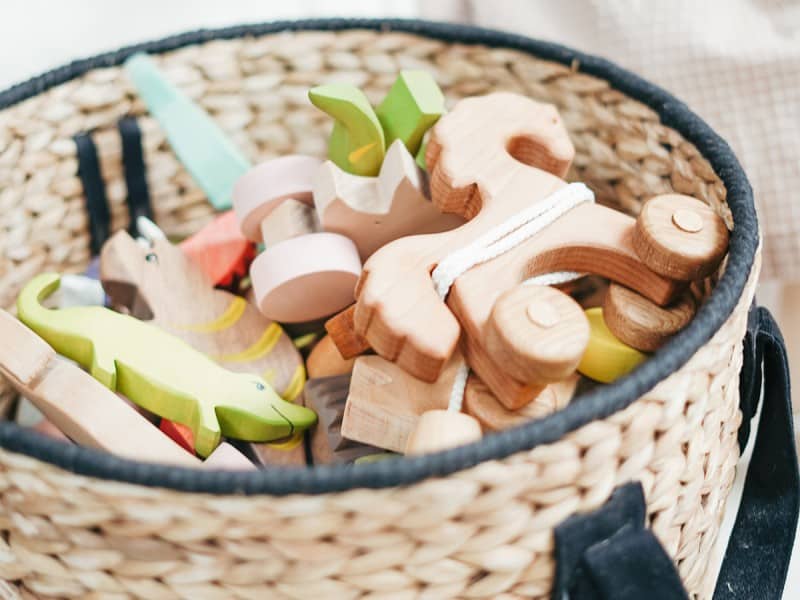
Choose a variety of quality blocks
Determine what you have on hand and what might be the next best addition. If you are just starting, try a set of wooden building blocks or blocks for toddlers.
If you have space, giant cardboard building blocks are fantastic for inspiring imaginary play. Select blocks that support building stacking, putting together, and taking apart, and encourage pretend play.
A variety allows kids to combine all different types of blocks in their play. Your child’s age and stage of block play will guide your decision about which building sets are appropriate.
- wooden unit blocks (many sizes and shapes)
- small wooden blocks (multicolored or plain)
- big building blocks (snap together)
- giant blocks
- magnetic wooden blocks
- magnetic tiles
- magnetic blocks for toddlers
- blocks made from boxes or milk cartons
Add Some Block Center Materials
Block center materials are the area that allows your child to use their imagination and creativity. By adding a variety of materials, children can imagine them into water, people, and faraway lands. Accessories are important to maximize the value of block play. Block center elements may be found around the house for free or purchased inexpensively.
Here are some ideas for block props for preschoolers. Be sure to keep them age-appropriate to avoid any choking hazards.
Add loose parts to encourage more block play
- mirrors
- glass gems
- fabric pieces
- wallpaper samples
- wood shapes
- tile or floor samples
- carpet samples
- cardboard piece
- empty thread spools
- craft sticks to make fences and signs
- cardboard paper rolls (from toilet paper or paper towels)
Bring a bit of nature inside with natural materials you find on a nature walk
- shells
- stones
- pods
- sticks
- flowers or leaves
Pretend play items scaled to block size encourage storytelling and imaginative play
- construction vehicles
- cars and trucks
- transportation vehicles
- interlocking road or train tracks
- traffic signs purchased or homemade
- block play people and animals
- dolls and dollhouse furniture
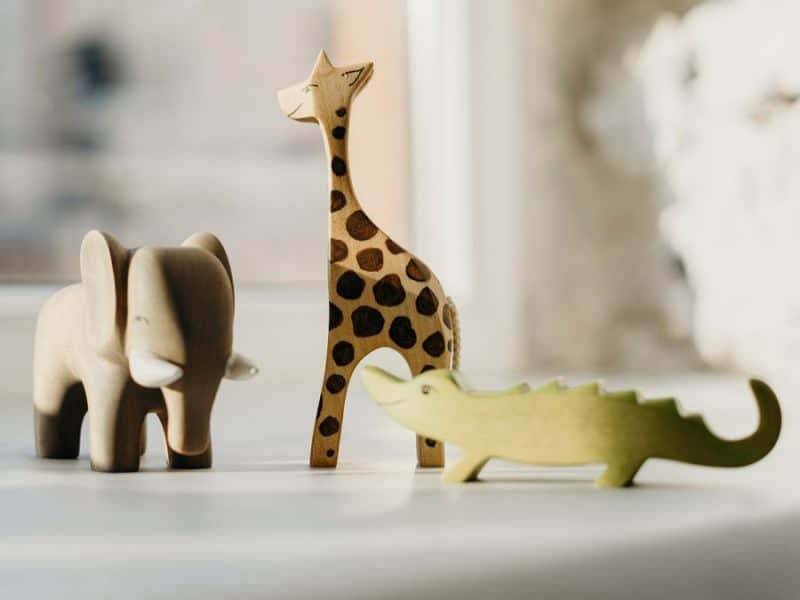
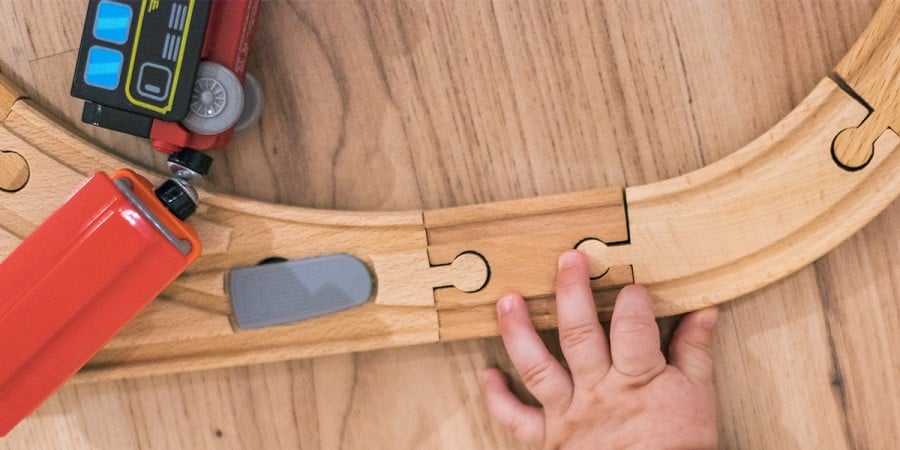
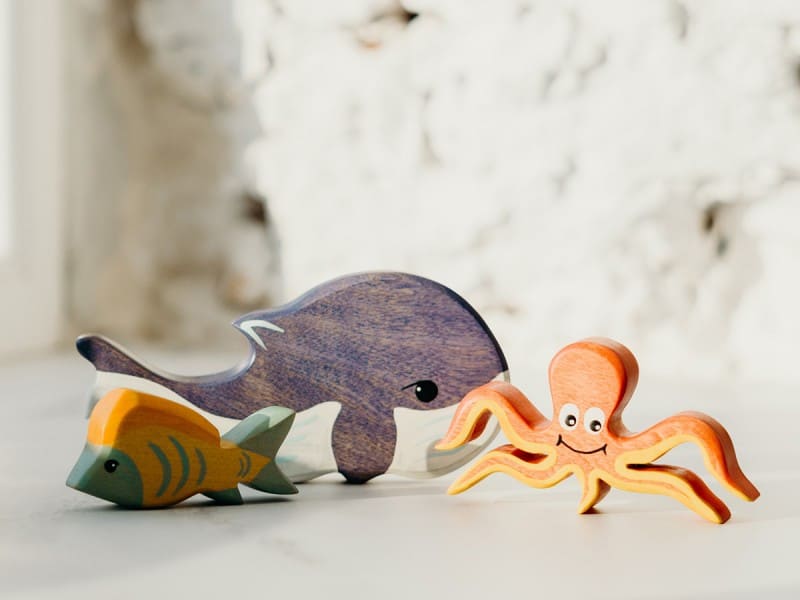
Additional items to consider having close by
- blankets, pillows, and tarps for tent-making
- books about building, construction, and transportation
- large posters or pictures can inspire block play ideas. For example, a photo of a family eating in a restaurant may suggest building a restaurant. Or what about a grocery store, hospital, or fire station?
- photographs from the world around them, like bridges, buildings, farms, cities, and more
- a camera for taking pictures of their block structures. That way, they can preserve their masterpiece when it is time to clean up.
If you are wondering about block play for toddlers, all the above suggestions still apply. However, adhering to the caution of choking hazards becomes crucial. Also, less is more for young builders. Keep the blocks larger with fewer large accessories. You can revisit the stages of block play as a guide.
Now that you have stocked and organized the space, the next step is to encourage safe and creative block play. Establishing a few rules is vital. You want to keep them simple and to a minimum so as not to inhibit the benefits of block play!
A few rules to help keep the block play area safe and welcoming for all builders
- Blocks are for building, not throwing.
- You may only unbuild or knock down your own structures.
How do you encourage block play?
Explore more block play activities and ways to promote block play. Keep building!
